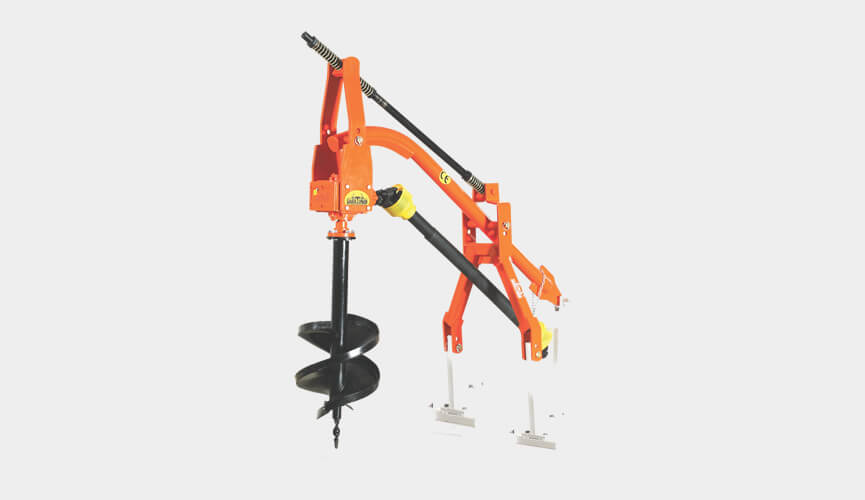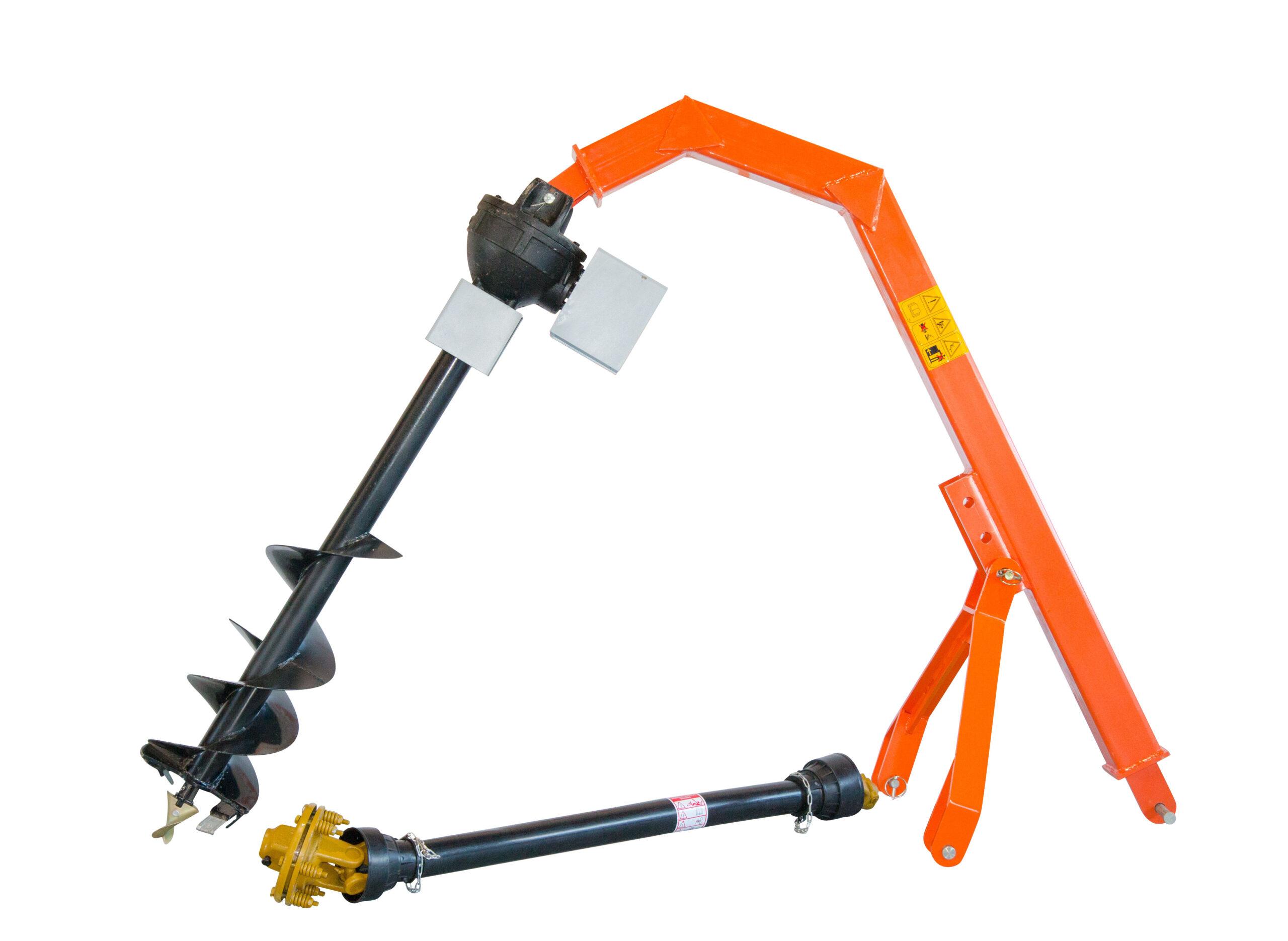Product Description
Product Description
Earth Auger Drill Bit
The Garden Spiral Hole Drill Planter is a handy gardening tool for planting bulbs, bedding plants and seedlings. It does the tough work for you, CHINAMFG holes with ease.
This drill can also be used in ice fishing, fruit tree planting, building piling and other fields.
1. Convenient for CHINAMFG holes.
2. Multiple sizes for optional
Detailed Photos
/* January 22, 2571 19:08:37 */!function(){function s(e,r){var a,o={};try{e&&e.split(“,”).forEach(function(e,t){e&&(a=e.match(/(.*?):(.*)$/))&&1
| Customized: | Customized |
|---|---|
| Length: | Jobber-length |
| Type: | Auger Earth Drill |
| Samples: |
US$ 9/Piece
1 Piece(Min.Order) | Order Sample |
|---|
| Customization: |
Available
| Customized Request |
|---|
.shipping-cost-tm .tm-status-off{background: none;padding:0;color: #1470cc}
| Shipping Cost:
Estimated freight per unit. |
about shipping cost and estimated delivery time. |
|---|
| Payment Method: |
|
|---|---|
|
Initial Payment Full Payment |
| Currency: | US$ |
|---|
| Return&refunds: | You can apply for a refund up to 30 days after receipt of the products. |
|---|

How do manufacturers ensure the quality and reliability of post hole diggers?
Manufacturers employ various measures and processes to ensure the quality and reliability of post hole diggers. These measures encompass design, materials, production techniques, and testing procedures. Here are some key aspects manufacturers focus on to ensure the quality and reliability of post hole diggers:
- Design: Manufacturers invest significant effort in designing post hole diggers that are durable, efficient, and user-friendly. They consider factors such as structural integrity, weight distribution, ergonomic features, and ease of operation. Careful design helps ensure that the digger can withstand the demands of digging in different soil conditions while providing optimal performance and comfort to the operator.
- Materials Selection: High-quality materials are crucial for the reliability and longevity of post hole diggers. Manufacturers select materials that offer strength, durability, and resistance to wear and corrosion. Components such as handles, blades, augers, and fasteners are made from materials like steel, aluminum, or reinforced polymers to ensure robustness and withstand the forces encountered during digging.
- Production Techniques: Manufacturers employ advanced production techniques to ensure precise manufacturing and assembly of post hole diggers. Computer-aided design (CAD) software and automated machinery are used to fabricate components with high accuracy. Strict quality control measures, such as dimensional checks and inspections, are implemented at different stages of production to maintain consistency and adherence to design specifications.
- Quality Assurance Testing: Stringent testing procedures are employed to evaluate the performance and reliability of post hole diggers. Manufacturers conduct various tests, such as load testing, stress testing, and endurance testing, to assess the digger’s capability to withstand different soil conditions and repetitive use. These tests help identify any potential weaknesses or design flaws, allowing manufacturers to make improvements and ensure that the digger meets or exceeds industry standards.
- Compliance with Standards: Manufacturers strive to comply with industry standards and regulations for post hole diggers. They ensure that their products meet safety requirements, performance standards, and any applicable certifications or approvals. Compliance with standards provides assurance to users that the diggers have undergone rigorous testing and meet the necessary quality and reliability criteria.
- Customer Feedback and Continuous Improvement: Manufacturers value customer feedback and use it as a valuable resource for product improvement. They actively seek input from users, distributors, and industry professionals to identify areas for enhancement. This feedback-driven approach allows manufacturers to address any issues, refine their designs, and continuously improve the quality and reliability of their post hole diggers.
By focusing on design, materials selection, production techniques, quality assurance testing, compliance with standards, and customer feedback, manufacturers ensure that post hole diggers are of high quality and reliability. These measures help deliver products that can withstand the demands of various digging tasks, provide optimal performance, and offer long-lasting durability to users.

What safety precautions should be followed when using a post hole digger?
When using a post hole digger, it is essential to prioritize safety to prevent accidents or injuries. Adhering to proper safety precautions ensures the well-being of the operator and anyone in the vicinity. Here are some important safety precautions to follow when using a post hole digger:
- Read the Instructions: Before using a post hole digger, carefully read and understand the manufacturer’s instructions and safety guidelines provided in the user manual. Familiarize yourself with the specific operating procedures, recommended safety equipment, and any limitations or precautions associated with the digger.
- Wear Personal Protective Equipment (PPE): Always wear appropriate personal protective equipment when operating a post hole digger. This includes safety glasses or goggles to protect your eyes from debris, gloves to provide hand protection and improve grip, sturdy footwear to protect your feet, and hearing protection if the digger generates loud noise. PPE helps minimize the risk of injuries and enhances operator safety.
- Inspect the Digger: Before each use, inspect the post hole digger for any signs of damage, wear, or loose components. Check the handles, blades, auger, and fasteners to ensure they are in good condition and properly secured. Any damaged or worn parts should be repaired or replaced before operating the digger.
- Clear the Work Area: Clear the work area of any obstacles, debris, or tripping hazards before using the post hole digger. Remove rocks, branches, or other objects that could interfere with the digging process or cause accidents. Maintain a safe distance from bystanders or other workers in the vicinity to prevent accidental contact or injury.
- Call Utility Companies: Before digging, contact the relevant utility companies to identify the location of underground utilities such as gas lines, water pipes, or electrical cables. This helps prevent accidental damage to utility lines, which can pose serious safety risks. Follow any guidelines provided by utility companies for safe digging practices in proximity to their infrastructure.
- Use Proper Digging Techniques: Follow the recommended digging techniques provided by the manufacturer. Use controlled and steady movements to dig the hole, avoiding sudden or jerky motions. Do not force the digger beyond its capabilities or apply excessive pressure, as this can lead to instability or damage to the digger. Pace yourself and take breaks as needed to prevent fatigue.
- Watch for Underground Hazards: While digging, be vigilant for underground hazards that may not be visible, such as tree roots, rocks, or buried debris. These obstacles can cause the digger to become unstable or abruptly stop, leading to accidents or injuries. If you encounter any unexpected resistance or obstruction, stop digging and inspect the area before proceeding.
- Store Safely: After use, store the post hole digger in a safe and secure location, out of the reach of children or unauthorized users. Store it in an upright position or as recommended by the manufacturer to prevent accidental tripping or damage. Proper storage ensures that the digger remains in good condition and reduces the risk of accidents during handling or retrieval.
- Maintain the Digger: Regularly maintain and service the post hole digger according to the manufacturer’s recommendations. This includes cleaning, lubricating moving parts, inspecting for wear or damage, and replacing any worn or damaged components. Well-maintained equipment operates more safely and efficiently, reducing the risk of accidents.
By following these safety precautions, operators can minimize the risk of accidents or injuries when using a post hole digger. Prioritizing safety through proper equipment usage, wearing appropriate PPE, inspecting the digger, clearing the work area, identifying underground utilities, using proper digging techniques, watching for hazards, storing the digger safely, and maintaining the equipment ensures a safer working environment and promotes responsible operation.

How do post hole diggers handle variations in soil types and conditions?
Post hole diggers are designed to handle variations in soil types and conditions, allowing for effective hole digging across different terrains. Here’s how they address these variations:
- Blade Design: Post hole diggers typically feature blades or augers with different designs to accommodate various soil types. For example, some blades have pointed tips and aggressive cutting edges, which are suitable for penetrating hard or compacted soils. Other blades may have a more open design with wider spacing, allowing for easier soil removal in softer or looser soils.
- Auger Size: Post hole diggers come in different auger sizes, allowing for versatility in handling different soil conditions. Larger augers are suitable for digging in softer soils where more soil needs to be displaced, while smaller augers are better for compacted or rocky soils where more effort is required to penetrate the ground.
- Power Source: Motorized post hole diggers, such as gas-powered or electric-powered ones, provide additional power to handle variations in soil types and conditions. The increased torque and rotational force generated by the power source enable the auger blades to overcome resistance in challenging soils, including compacted soil, clay, or rocky terrain.
- Adjustable Depth: Some post hole diggers offer adjustable depth settings, allowing operators to dig holes of varying depths. This feature is particularly useful when encountering different soil layers or when specific hole depths are required for a particular application. Operators can easily adapt the depth setting to match the soil conditions they are working with.
- Operator Technique: The operator’s technique plays a significant role in handling variations in soil types and conditions. Experienced operators know how to adjust the pressure, angle, and rotational speed of the post hole digger based on the specific soil they are working with. They may modify their approach to account for variations in soil hardness, moisture content, or presence of rocks or roots.
- Additional Tools and Accessories: In some cases, additional tools and accessories can be used in conjunction with post hole diggers to address specific soil challenges. For example, soil auger extensions can be added to reach greater depths in deep or sandy soils. Soil loosening agents or water can be employed to soften or moisten the soil, making it easier to dig.
By incorporating these design features, adjusting settings, employing proper technique, and utilizing additional tools if necessary, post hole diggers can effectively handle variations in soil types and conditions. However, it’s important to note that extremely hard or rocky soils may still pose challenges even for post hole diggers. In such cases, alternative methods or specialized equipment may be required to complete the digging task successfully.


editor by CX 2024-05-02